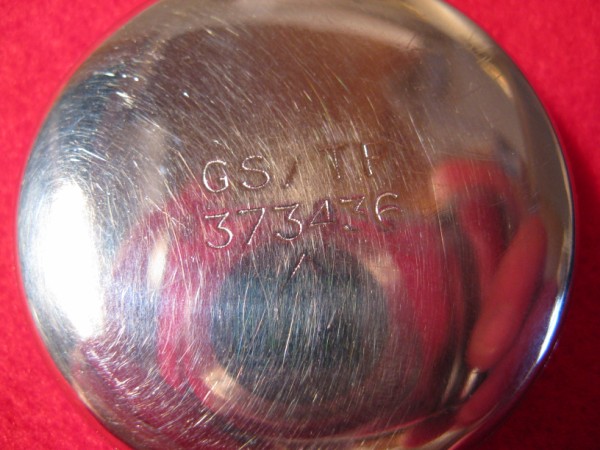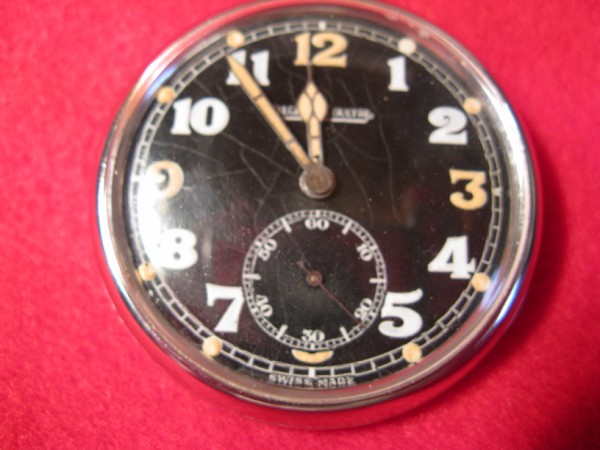
| WWT Shows | CLICK TO: Join and Support Internet Horology Club 185™ | IHC185™ Forums |

|
• Check Out Our... • • TWO Book Offer! • |
Welcome Aboard IHC185™  Internet Horology Club 185
Internet Horology Club 185  IHC185™ Discussion Site Main Page
IHC185™ Discussion Site Main Page  Horological Discussions, Questions and Answers
Horological Discussions, Questions and Answers  Military Timepiece Discussions - EXCLUSIVE!
Military Timepiece Discussions - EXCLUSIVE!  Jaeger LeCoultre P/W
Jaeger LeCoultre P/W
 Internet Horology Club 185
Internet Horology Club 185  IHC185™ Discussion Site Main Page
IHC185™ Discussion Site Main Page  Horological Discussions, Questions and Answers
Horological Discussions, Questions and Answers  Military Timepiece Discussions - EXCLUSIVE!
Military Timepiece Discussions - EXCLUSIVE!  Jaeger LeCoultre P/W
Jaeger LeCoultre P/WGo  | New Topic  | Find-Or-Search  | Notify  | Tools  | Reply to Post  |  |
Hi All, Who can tell me about this Jaeger LeCoultre Military P/W. How many jewel, years of production,military service, etc. Here is the movement  | |||
|
here is the military marks  | ||||
|
and the dial  | ||||
|
Thanks in advance for any information you have on this watch, Bill | ||||
|
The GS/TP marking indicates that it would be a British Army pocket watch made from around the mid to late 1930s to the early to mid 1950s. Most of them were made around WW II or so. The GS/TP stands for either General Service/Trade Pattern, or General Service/Temporary Pattern, depending on what reference you use. The General Service part indicates that they were made for ordinary use where accuracy was not the most important factor and thus the Army did not spend the money for the extra quality that would have been needed for a very accurate watch. The Trade Pattern or Temporary Pattern part signifies either that the watch is based on a standard civilian design (Trade Pattern) or that it is based on a Temporary design to meet the need of the moment (Temporary Pattern). These are the most commonly seen British Army watches of this era and the majority of them were used during WW II for one use or another excluding those requiring a very accurate timepiece. They were supplied to the British Army in very large numbers by a many makers, with your JLC being an example of one of these. You find them with either white or black dials. They are auctioned on Ebay regularly where you can see their relative value. | ||||
|
Thanks Jim for all the info, as time goes on I hopefully will absorb some of the knowledge you folks so freely offer, thanks again, Bill | ||||
|
| IHC Life Member |
Bill, These watches in this condition have a $250.00 and up "street value". The military version is most interesting and should be researched more. The large scale issuance of these typy watches actually includes many smal qwuantities of many varieties. But according to the information I have, all watches made after the Jeager-LeCoultre merger were worth more than the earlier LeCoultre. | |||
|
Bill, As far as I can recall, these movements have 15 jewels ........... and are absolutely beautiful, both to look at and service. If I had any advice to give regarding use, I would say be very careful with the winding stem, it's Very fragile - almost a wristwatch diameter and they snap easily where the setting lever locates in the groove! As has already been said, they were issued with both Black or White dials and mostly GS/TP engraved. I've also seen the white dial varieties with Air ministry (RAF) markings on the back cover rather than GSTP, and these are the babies that fetch real money - even though all these JLC's are the same animal 'under the hood' I've also seen them with blued steel spade and poker hands on the RAF issues but more usually with the 'Cathedral' hands similar to your watch. If anything lets these watches down, it's the garbage dials that were put on them! The cover cracks and flakes off, can't remember just what it is, either plastic coated or paper, but it can crack and peel up at the edges of the seconds dial, so keep an eye on that as it will stop the watch! Yours looks to be a very nice example too, enjoy it. Best regards John | ||||
|
One other thing to be very care about, never try to scrape off the brownish/yellowish paint on the hands or the dial. And if any flakes off naturally be very careful not to breathe any of it in. The reason is it is a mixture of radium-226 and zinc sulphide. The radium-226 provided the energy source and the zinc sulphide is what it energized to glow. The problem is the radium-226 is so strong that it oxidized (burned out) the zinc sulphide after about 20 years so that it no longer glows, but the radium-226 keeps on emiting radiation for a very long time - the half-life of radium-226 is over 1,600 years. That means that over a period of 1,600+ years, the strength of the radiation goes down by 50%. So, on a WW II timepiece the radium paint will be about 2 percent less powerful that the day it was made, but there will be no glowing since the zinc sulphide has long since been burned out. You really do not want to breathe in any dust or tiny flakes of this paint and have it lodge deep in your lungs. | ||||
|
Thanks all, I have been away for a week or so, and just now got all the following info. Thanks again, for all the expert advice and knowledge. Bill | ||||
|
| Powered by Social Strata |
| Your request is being processed... |
|
©2002-2025 Internet Horology Club 185™ - Lindell V. Riddle President - All Rights Reserved Worldwide

